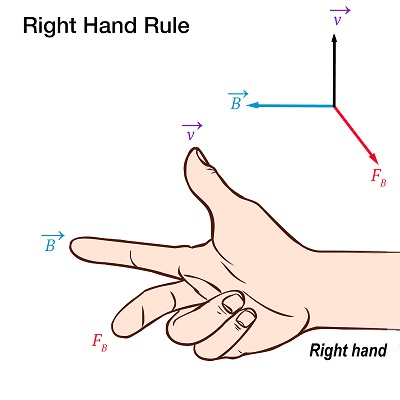<< Hide Menu
Jed Quiaoit
Jed Quiaoit
Refresher on forces: At the macroscopic level, forces play a critical role in shaping the physical world around us. These forces can be broadly classified into two main categories: long-range forces and contact forces. ✌️
Long-range forces, also known as action-at-a-distance forces, are those that act on objects without the need for physical contact. Gravity is a classic example of a long-range force, as it exerts its influence on objects regardless of their proximity to one another. Electromagnetic forces, including magnetic forces, also fall into this category.

Source: Geeks for Geeks
Magnetic forces are the result of the interaction between charged objects or magnets. When a charged object or magnet moves near another charged object or magnet, a magnetic force is generated that causes the objects to either attract or repel one another. This force is caused by the movement of charged particles, such as electrons, within the objects! ❎
Magnetic forces are significant in many everyday applications. For example, magnetic forces are used…
- in motors and generators to produce electrical energy
- in MRI machines to produce detailed images of the human body
- in magnetic levitation trains to enable them to hover above the track

Source: ResearchGate
Let’s get to know magnetic forces better by diving deeper into their properties!
Properties of Magnetic Forces
"North-South" Dipole Polarity
At the most fundamental level, the behavior of magnetic fields can be attributed to the presence of magnetic dipoles, which are characterized by a north and south polarity. These dipoles can arise in a variety of physical systems, such as magnets or electric currents. 🌍
A magnetic dipole is essentially a pair of poles of opposite polarity that are separated by a certain distance. The north pole of a magnetic dipole is so called because it behaves like the north pole of the Earth's magnetic field, which points towards the geographic north pole. Similarly, the south pole of a magnetic dipole behaves like the south pole of the Earth's magnetic field, which points towards the geographic south pole.

Source: BC Open Textbooks
The direction of the magnetic field lines is such that they emerge from the north pole of the dipole and converge towards the south pole, forming a closed loop. This creates a magnetic field that is strongest near the poles and weaker in the regions between them.
Magnetic Dipole Moments
The magnetic dipole moment of an object describes the strength and orientation of the object's magnetic field. It is a vector quantity, meaning that it has both magnitude and direction, and is denoted by the symbol μ. 🪨
The direction of the magnetic dipole moment vector is defined in such a way that the tail of the vector points towards the south pole of the object, while the head of the vector points towards the north pole. This convention is based on the fact that the magnetic field lines of a dipole emerge from the north pole and converge towards the south pole, forming a closed loop.
The magnitude of the magnetic dipole moment is proportional to the strength of the magnetic field that the object produces. The formula for calculating the magnetic dipole moment of an object is μ = IA, where I is the current flowing through the object and A is the area of the loop formed by the current.

Source: Physics Bootcamp
In the presence of an external magnetic field, the behavior of a magnetic dipole is influenced by the interaction between the external field and the dipole's own magnetic field. This interaction causes the magnetic dipole moment vector to align with the direction of the external magnetic field.
This phenomenon is known as magnetic alignment, and it arises from the fact that the magnetic dipole moment experiences a torque when placed in an external magnetic field. The torque causes the dipole moment to rotate until it is aligned with the direction of the external magnetic field.
The strength of the alignment between the magnetic dipole moment and the external magnetic field depends on a variety of factors, including the strength of the external field, the magnetic properties of the material that makes up the dipole, and the temperature of the system.
The Right-Hand Rule (RHR)
Again, the interaction between a magnetic field and a moving charged object can give rise to a force on the object, known as the magnetic force. This force is always perpendicular to both the magnetic field and the velocity of the charged object and is described by the right-hand rule. 👉
The right-hand rule is a convention used to determine the direction of the magnetic force vector. It states that if you point your right thumb in the direction of the charged object's velocity vector and your fingers in the direction of the magnetic field vector, then the direction in which your fingers curl represents the direction of the magnetic force vector.

Source: PASCO Scientific
The magnitude of the magnetic force on a charged object depends on several factors, including the strength of the magnetic field, the velocity of the charged object, and the charge of the object. The formula for calculating the magnetic force on a charged object is F = q(v x B), where F is the force, q is the charge of the object, v is its velocity vector, and B is the magnetic field vector. ⚡
Relevant Equations


© 2024 Fiveable Inc. All rights reserved.